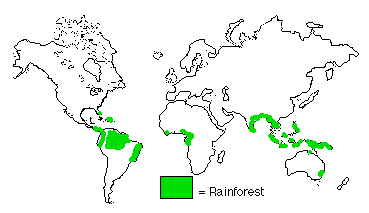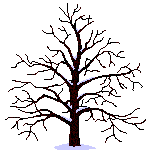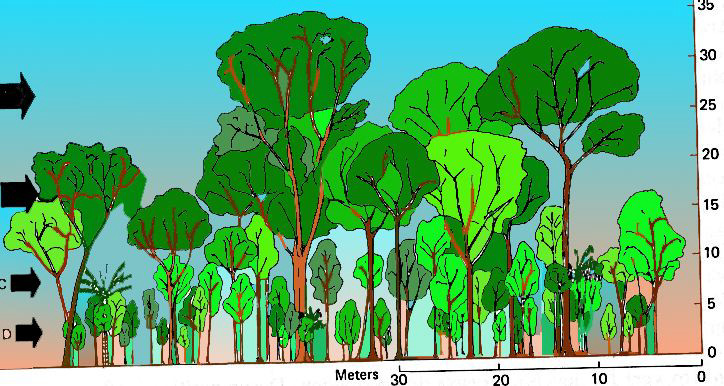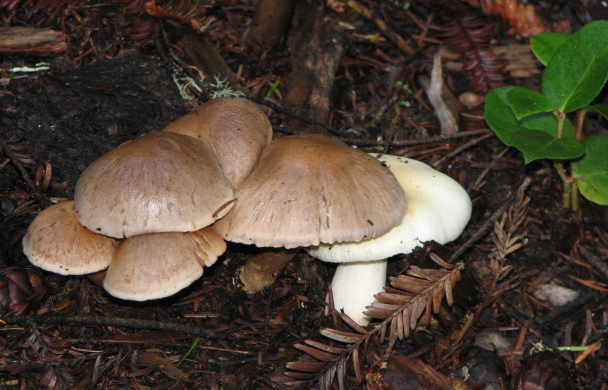 Deforestation Outline
Deforestation OutlineNavigating the site:
| page 202 | |
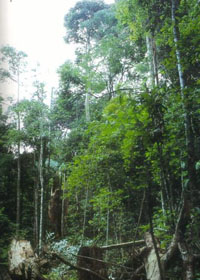
|
¶ 2
|
|
|
“On looking back, I feel that the forest represented a more striking spectacle than any other I have come across during my travels in almost one hundred countries....a dipterocarp forest is in a class of its own.”
¶ 3, page 203.
“Things will not be the same for you again after setting eyes on something that exceeds all your previous experience.”
This
forest is today, largely cut, the trees are gone.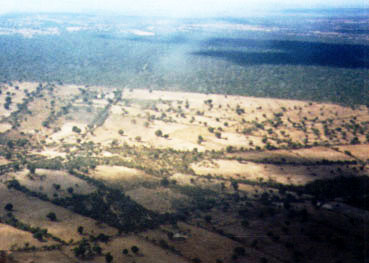
Meaning | FORESTS, | SYSTEMS | Size matters | Biodiversity | Climate | Ecological Integrity
Size
¶ 4
“Moreover, as a tree is more than just wood, so a forest is more than just trees.
¶ 5, page 204
“A typical dipterocarp .... forests of southeast Asia cover an area of a “million square kilometers.” ¶ 7
Antiquity of trees is significant
100-600 years old ¶ 8
page 205.
Meaning | FORESTS, | SYSTEMS | Size matters | Biodiversity | Climate | Ecological Integrity
“a tropical rain forest amounts to a veritable dynamo for generating wood”
¶ 9
Production is a measure of generative capacity ; represented in the diagram below by "![]() " symbols.
" symbols.
Sunlight & photosynthesis Glucose, starch & fiber 
wood & trees Output Ingredients by-products ATP adenosine tri phosphate X Glucose = Wood and cellulose 400 cubic meters/ hectare to 600 cu. m. / hectare up to 750 cu. m. / hectare
1 cubic meter ~ one ton (carbon, nitrogen and sulfur fixation)in half a hectare there were 20 species of trees ¶ 10
tree = any thing with a trunk of 4” or 10 centimeters ¶ 10
No other place on Earth is this diverse over such a condensed area.
¶ 11, page 206.
Meaning | FORESTS, | SYSTEMS | Size matters | Biodiversity | Climate | Ecological Integrity
Are more complicated than we can think!
non-woody plants ¶ 12
epiphytes, & 1/4 of all the world's orchids are in Southeast Asia ¶ 13
lack of sunlight for thick undergrowth ¶ 14
canopy "So diverse is the world of the forest canopy that it can be considered the last great frontier of biology ¶ 15
relative ignorance of the biology of the forest canopy “recent advances in frontier biology” ¶ 16
diversity so great that “only a few representatives in a whole hectare.” ¶ 17
page 208.
Meaning | FORESTS, | SYSTEMS | Size matters | Biodiversity | Climate | Ecological Integrity
disappearance in the wild of the Malay begonia found only in 1940s ¶ 17
Corcovado NP, Costa Rica, 8 species of Heliconius butterflies
¶ 18
6 million square kilometers of the Amazon region ¶ 18
262 dipterocarp species in Borneo & only 15 in New Guinea; 1700 km eastward ¶ 19
Borneo, or Kalimantan as the Indonesians call it, has a greater diversity of dipterocarp species than does New Guinea, a very diverse island.
“Amazonia has eight phytogeographic zones, or ‘plant areas,’ each with a distinctive assembly of plants and animals. This diversity [ecological] of formations in tropical forests is in contrast to the pattern of forests elsewhere. In Alaska, for example, we find a type of forest that is virtually identical to the one in northeastern Canada -- 4,500 kilometers away.”
¶ 19
Meaning | FORESTS, | SYSTEMS | Size matters | Biodiversity | Climate | Ecological Integrity
Systemic look:
what makes a forest tick?
¶ 20
temperate strategies for timbering, parks and preservation must all be different
¶ 20
“I believe that using the term ‘forest’ for a bunch of trees in the tropics and a bunch of trees elsewhere is misleading.”
¶ 20; page 209
Borneo receives 5 meters of rainfall... throughout the year. [ 180 inches/ yr. ]
Impact of the rain storm on the forest & 1/4 reaches the ground ¶21
“This insulation of the forest interior, I surmised, must help to maintain the equable climate, with its stable warmth and moisture levels throughout the day and night.” ¶ 22
“Following the thunderstorm, the forest released a smell of earthly fertility. A musty odor, like that in a greenhouse, it was strangely satisfying even though it spoke of decomposition" [mixed metaphor?]
“a forest is home to hosts of decomposers, notably organisms of the topsoil, such as mites, nematodes, ants, and termites. In one square meter of leaf litter... found 800 ants belonging to 50 species, while similar square meter may contain as many as 2,000 termites.
¶ 23; page 210
Meaning | FORESTS, | SYSTEMS | Size matters | Biodiversity | Climate | Ecological Integrity
between 4 and 7 grams of soil fauna per square meter, an amount twice the like weight of all mammals and birds in the region put together. 1/3 to 1/2 termites
¶23
In Malaysia, half the biomass (living matter) of the 4 million wildebeest, zebra & gazelles of the Serengeti is made up of termites!
¶ 23
Ecological integrity, protection
KEY: “the topsoil contains multitudes of fungi, especially mycorrhizal fungi,”
¶24
“In other words the smell of the fungi and other decomposers is the smell of life.”
¶ 24
“In fact, leaf litter can decompose within six weeks” compared to leaf litter decay rates one year in a temperate and 7 years in a boreal conifer forest.
¶ 25
contrast the danger / safety of the forest and the city’s streets
¶ 26
“we still know next to nothing about what makes a forest continue on its quiet, complex way.”
¶ 27, page 211
Meaning | FORESTS, | SYSTEMS | Size matters | Biodiversity | Climate | Ecological Integrity
“we do not have a precise idea of just how much tropical forest still exists."
¶ 27
"sensing I had picked up more basic biology in this patch of forest than possible during a day in any other ecological zone.”
¶ 28
one of the few ways that really matter, through first-hand experience.... and through a process of ‘imaginative osmosis’ that I find stirs within me whenever I am confronted with a major phenomenon of nature.”
¶ 28
“rather it is recreation in the sense of re-creation.”
¶ 28
Threats to forests worldwide also come from:
Ecological rules of the natural game.Meaning | Forests, | SYSTEMS | Size matters | Biodiversity | Climate | Ecological Integrity
Melissa Walker, Reading the Environment, "Nature's Powerhouse," pages 202 - 210.
Robert Costanza1, Ralph d'Arge2, Rudolf de Groot3, Stephen Farber4, Monica
Grasso5, Bruce Hannon6, Karin Limburg7, Shahid Naeem8, Robert V. O'Neill9, Jose
Paruelo10, Robert G. Raskin11, Paul Sutton12, & Marjan van den Belt13.
"The Value of the World's Ecosystem Services and Natural Capital." NATURE
Vol. 387, 15 May 1987 (p 253-260). p. 258.
Plant ecologist, Dr. Jack Putz of U of Florida, says now this dipterocarp forest has largely disappeared due to logging of older trees.
Personal Communication, 2004.
Science Index | Site Analysis | Population Index | Global Warming Index | Nature Index | Ecological ideas

